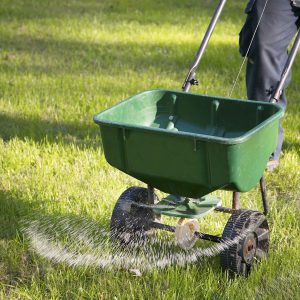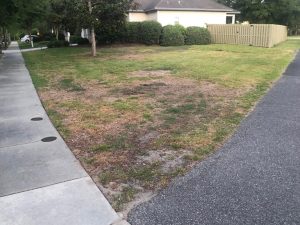Well folks, the earth has made yet another trip around the sun, and we find ourselves in another of hopefully many a new year. The weather has been cold, but it’s important that we spend a few moments plotting a strategy for our lawns in the coming year. Lawncare is a subject which is shrouded in myths and often misunderstood. Luckily, a little bit of knowledge can help you achieve stress free healthy turfgrasses.
Lifecycle
The first thing homeowners should understand is how turfgrass grows throughout the year. Turfgrass is split into warm and cool season species. You may have guessed that in the Florida Panhandle, warm season grasses are dominant. These grasses perform well in warmer weather going dormant when temperature begins to fall. During this dormant period, these grasses turn brown and may appear to have died. The grass itself is alive and well, but the roots have died back significantly.
Fertilizers
Why is this an important piece of information? There is no point in applying fertilizers to turfgrasses with no ability to absorb them. Instead, waiting until mid-April (think Tax Day) for fertilizers provides two key benefits. First, it allows time for the grass to develop a thick mat of roots. As roots are the main tissue for nutrient entry into plants allowing your lawn to utilize the applied nutrition. Second, waiting until a little later evades late season freezes. Cold weather may harm early season growth which stresses your lawn which could cause die back allowing weeds to take over.
Weed Prevention
The subject of weeds brings us to a critical cultural practice in terms of lawncare. The application of preemergent herbicides. These herbicides are designed to create a barrier in the top 1/2 inch of soil which prevents shoot and root growth after weed seed germination.
Now, it’s important to understand, there are hundreds of thousands of weed seeds in the top layers of soil all over the world. Weeds take advantage of open spots in your lawn as does any plant in any ecological system.
A preemergent herbicide prevents weed from being able to fill those spaces, by preventing their growth. Given the proper watering and fertilization, your grass may now fill these voids. Your lawn will outcompete the weeds and become its own preventative.
Selecting and application of a pre-emergent herbicide does have some nuance. Not every product is compatible with every grass type, consult our Weed Management Guide to select a product that will work for your lawn. Another concern is application timing and frequency. Multiple applications will likely be required in the spring due to those triggers which break seed dormancy combined with product efficacy timelines. Local extension offices are a great resource for specificity, but generally application will need to be mid-February with a second application 6-8 weeks later based on the product label. Also important to note is that this is a long-term process. It may take a few years of spring and fall application to eradicate the weeds in your lawn.
To Sum Up
Turfgrasses make excellent groundcovers and are look best when grown as stress free as possible. In the early parts of the year that entails holding off on fertilization and adding a layer of protection for summer weeds. Getting to know your turfgrass and familiarizing yourself with proper cultural practices will go a long way to making a healthy lush lawn. For more information you may read through our Florida Lawn Handbook or consult your local Extension Agent.
- Cold Protection for North Florida - November 6, 2025
- Planning and Planting for Wildlife - October 10, 2025
- Why Say No to Invasive Species - August 23, 2025


